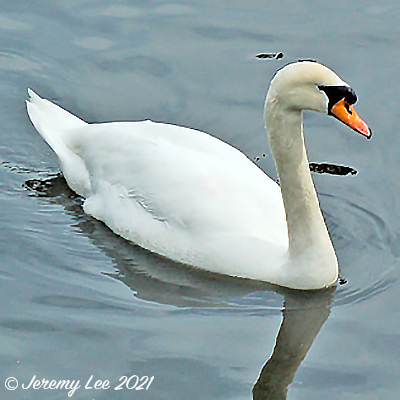
 |
|
Scientific Classifications explained » Amphibians » Ants » Aphids » Bees » Beetles » Birds » Bugs » Butterflies » Caterpillars » Damselflies » Dragonflies » Earwigs » Flies » Frog/Leafhoppers » Fungi » Galls » Grasshoppers » Harvestmen » Hoverflies » Lacewings » Ladybirds » Leaf Mines » Lichens » Mammals » Millipedes » Mosses » Moths » Sawflies » Slugs » Snails » Spiders » Trees & Shrubs » Wasps » Wild Flowers » Woodlice » Postboxes |
UK Nature > Birds > Cygnus olor

Scientific Name: Cygnus olor Common Name: Mute Swan Cygnus olor, more commonly known as the Mute Swan, is the commonest swan seen in the UK, huge and white with a gracefully curved, S-shaped neck. The deep orange beak and large black knob separates it from the other two swans seen in the UK, namely Hooper and Bewick's. Flies with its neck extended and regular slow wingbeats. The population in the UK has increased recently, perhaps due to better protection of this species. Cygnets start off grey then turn into brown juveniles which already show the distinctive black around the base of the bill. They breed and winter on lakes, streams, rivers, estuaries, and marshes. A familiar bird throughout Britain, commonest in lowland areas. They can be remarkably tame and approachable - yet at other times, usually during the breeding season, they have been known to attack people who stray too near their nests. |
|

https://www.uknature.co.uk is a website dedicated to showing the immense diversity of UK nature and wildlife. Our vast range of habitats, from lowland arable to snow covered mountains, from storm-ravaged coastlines to peaceful inland freshwater lakes and rivers, from dry, sandy heaths to deciduous and coniferous forests, all these habitats contribute to the abundance of UK nature. We have wild birds in huge numbers either residing or visiting our shores (597 recorded species as at July 2013) and we must also not forget the humble back garden with its grass lawns, flower beds filled with nectar rich flowers, shrubs and trees, all designed to attract huge numbers of insects such as bees, moths, butterflies and hoverflies; and finally the small ponds which provide safe havens for frogs, toads, newts and even slow worms and grass snakes. www.uknature.co.uk is the showcase for my personal passion, photographing uknature in all its glory. I sincerely hope you all enjoy the fruits of my labours. This site and all images contained therein is © Jeremy Lee 2004 - 2025. All Rights Reserved. Site design by Jeremy Lee. Site development & IT Support by Stuart Lee. |